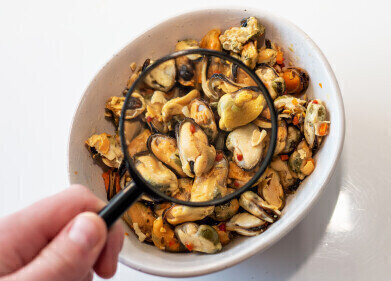GC-MS
Wine Tasting Notes — Best Sipped with Bacteria
Jan 29 2016
With the supermarket shelves full of antibacterial sprays and cleaners you could be forgiven for thinking that bacteria are an enemy we have to destroy. But life without bacteria would be very poor. Without bacteria there would be no coffee for breakfast, cheese for lunch or cocoa before bed — and we would not be able to sample a glass of wine while we relax in front of the television.
And it seems that as well as helping to make wine — playing an important role in fermentation — it’s bacteria that help us to taste and smell wine. Let’s take a look at how this happens — first at the bacteria and then how chromatography helped researchers see how microbes make wine come alive in our mouths.
Oral microbiota
The human body is awash with bacteria — with ten bacterial cells to every human cell in-and-on our body. It is thought that there are around 700 bacterial species that can inhabit our mouths — though most people only have a small number of different bacteria. Some prefer to live between our teeth while others like to live on our tongues — and while some help us to digest food and protect our teeth and gums, others cause tooth decay and disease due to their feeding on sugars.
But a paper published in the journal Food Chemistry has highlighted another aspect of our oral bacteria — they can help us to taste the hidden flavours in a glass of wine.
Drunken microbes
In a paper titled ‘Ability of human oral microbiota to produce wine odorant aglycones from odourless grape glycosidic aroma precursors’ the researchers wanted to see what effect the bacteria in our mouth has on our perception of a wine’s smell and taste.
The aroma profile of a wine is complex — with many different influences including the grape’s environment and the type of grape itself. Some of the grape’s compounds are known as aroma precursors, and during wine production they form volatile compounds that are released from the wine. However, some of these compounds are not released during production — but during consumption.
A unique flavour
When we drink a glass of wine, the bacteria in our mouths convert these precursors into volatile aroma compounds. The researchers used gas chromatography – mass spectrometry to analyse the aroma molecules formed when the oral bacteria converted the aroma precursors. The team found many aroma compounds released, and significantly they found that different bacteria released different aroma compounds. Since we all have slightly different bacteria profiles — we’ll all taste the same glass of wine slightly differently.
Pour yourself a glass of wine and let your bacteria release the aroma while you find out more about wine testing in this article, In Wine There is Truth - The Characterisation and Quantitative Analysis of Wine Using Spectroscopic Methods.
Image by jenny downing
Digital Edition
Chromatography Today - Buyers' Guide 2022
October 2023
In This Edition Modern & Practical Applications - Accelerating ADC Development with Mass Spectrometry - Implementing High-Resolution Ion Mobility into Peptide Mapping Workflows Chromatogr...
View all digital editions
Events
Apr 23 2024 Kintex, South Korea
Apr 23 2024 Seoul, South Korea
Apr 28 2024 Montreal, Quebec, Canada
May 05 2024 Seville, Spain
May 15 2024 Birmingham, UK














